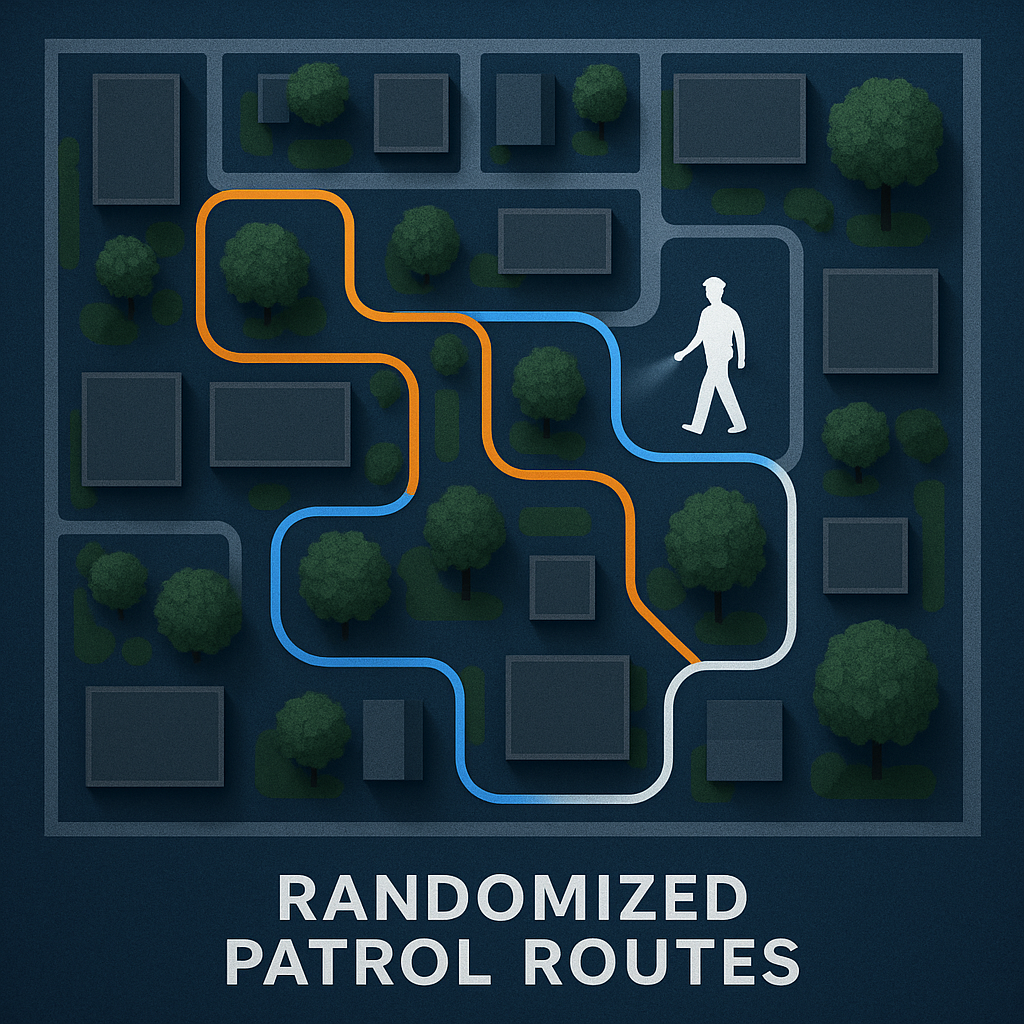Table of Contents
- 1 Rethinking Security: The Pitfalls of Predictable Patrols
- 2 The Concept Behind Randomized Patrols
- 3 Deterrence Theory: Why Uncertainty Stops Crime
- 4 Operational Benefits of Randomized Patrols for Security Teams
- 5 Technology as an Enabler: Using Data for Intelligent Randomization
- 6 Steps for Implementing Randomized Patrol Strategies
- 7 Looking Ahead: The Future of Security Patrols
Rethinking Security: The Pitfalls of Predictable Patrols
Organizations and facilities have relied on fixed security routines for decades to deter criminals and maintain safety. Traditional patrols usually follow set schedules, moving along the same routes and checkpoints at predictable times every day or night. In environments where valuable assets or sensitive information are at stake, this predictability can undermine the very purpose of having security measures in the first place. Adopting methods that disrupt these exploitable patterns is crucial for organizations wanting to stay one step ahead. By deploying a security guard service that implements unpredictable patrolling strategies, businesses can dramatically reduce vulnerabilities and deter unwanted activity more effectively.
The Concept Behind Randomized Patrols
Randomized patrols involve varying security route timings, locations, and routines using a mix of deliberate unpredictability and responsive adjustments. Unlike standard approaches, which stick to the same predictable schedules, randomized patrols make it difficult for potential offenders to know when and where security personnel will appear next. This element of uncertainty is a powerful deterrent.
Deterrence Theory: Why Uncertainty Stops Crime
The deterrence theory posits that if the risk of being caught feels too high, the likelihood of committing a crime drops significantly. With randomized patrols, security is no longer a static, easily avoided obstacle; it becomes a dynamic presence that could appear anywhere, anytime. This uncertainty creates a psychological barrier for potential offenders, deterring them from acting on unlawful intentions.

Operational Benefits of Randomized Patrols for Security Teams
The value of randomized patrols extends well beyond basic deterrence. Operationally, these strategies allow for greater area coverage, as patrols adjust dynamically based on recent activity, vulnerabilities, or intelligence. Responding to incidents or focusing on emerging problem areas becomes easier when routines aren’t set. Personnel morale can also see an uptick. Security professionals tasked with variable patrols tend to feel more engaged and less susceptible to the boredom or complacency of fixed schedules.
Technology as an Enabler: Using Data for Intelligent Randomization
Modern technology is a game-changer in implementing and optimizing randomized security patrols. Sophisticated software solutions and mobile applications now enable real-time route planning and adjustments, using data analytics to gauge risk areas and recommend patrol priorities. These digital tools can integrate patterns of previous incidents, scheduled events, and even live sensor data to keep security posture adaptive and proactive.
Steps for Implementing Randomized Patrol Strategies
Transitioning to randomized patrols requires thoughtful planning:
- Develop a flexible schedule that intentionally varies timing and routes every day.
- Blend operational needs—such as coverage of high-risk areas—with strategic randomness to ensure unpredictability without compromising security objectives.
- Utilize feedback from incident reports and analytics to refine your approach, keeping potential offenders perpetually off-balance.
- Regularly review and tweak patrol strategies based on evolving security needs, workforce insights, and new technological capabilities.
Looking Ahead: The Future of Security Patrols
The evolution of patrol strategies is ongoing. The future will likely see an even greater integration of artificial intelligence, drones, and predictive analytics into security planning. These technologies promise to make randomization both intelligent and efficient, maximizing security coverage and reducing crime opportunities. The imperative for organizations seeking to protect assets and people in a dynamic threat landscape is clear: adapt and innovate, or risk being outsmarted. Switching from routine to randomized patrols isn’t just a tactical upgrade, but a strategic necessity in the modern world.


